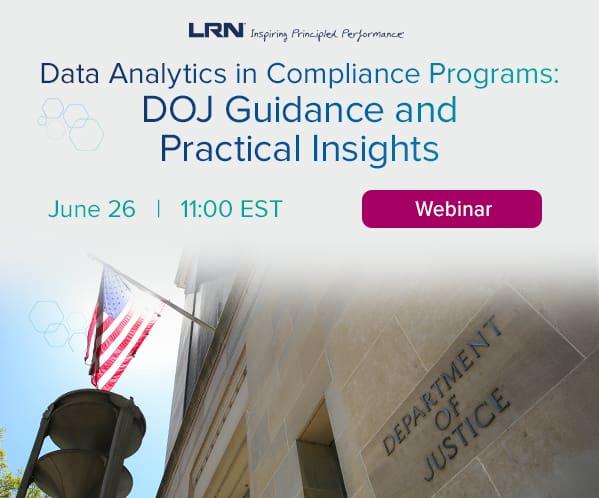Six Reasons Most M&A Deals Fail to Deliver
Linda Henman examines the challenges facing mergers and acquisitions deals, dispelling myths and delving into the reality of the M&A landscape. Leaders need to insist on an integrated approach, readily informed by constant learning through challenges.
When companies merge or acquire, stakeholders rightly expect the whole to become greater than the sum of its parts. Unfortunately, this happens less than half the time. Not only does one plus one not equal three; too often mergers and acquisitions result in losses. A once-exceptional organization can quickly take a turn toward mediocrity, or worse.
Study after study puts the failure rate of mergers and acquisitions between 70% and 90%. Many researchers have tried to explain these abysmal results, usually by analyzing the characteristics of deals that worked and those that didn’t. That’s a start, but it only informs decision-makers about the features of the deals that caused or prevented failures. Statistics don’t truly get to the core of the cause/effect relationships among planning, evaluating, and integrating—the essential traits for successful mergers and acquisitions.
A Merger Mindset—one that shapes resilience—recognizes that challenges aren’t permanent; talented people can figure things out; and even failure isn’t fatal. The Merger Mindset allows leaders to learn from past missteps and helps them move past them, so people and organizations can thrive.
Whether you intend to buy, sell, or hold, before you build something new, expect that some things will usually change. Some will break, and others will need to be broken. It doesn’t happen every time, but it happens often enough for us to conclude that decision-makers need a new way of thinking about high-stakes deals.
We venerate our sacred cows, traditions, and conventional approaches because they make us feel secure. But like all emotional security blankets, they unravel, and their usefulness fades. When we replace emotional responses with new attitudes and cognitive skills, and we challenge ourselves to take risks, reframe, and live well-thought-out beliefs instead of clinging to what we’ve always done, we open the door for new opportunities and optimism.
Why, then, do most mergers and acquisitions fail or fail to deliver on the deal thesis?
1.Leaders start with a flawed deal thesis.
The deal thesis explains the sound reasons for buying a company. This pithy, definitive statement articulates the rationale behind the transaction and outlines why this investment makes good business sense. Every M & A deal—big or small—should start with a clear statement that communicates to everyone why you would want to own this particular business and describes how the deal will create value for the company.
The most successful deals start with a clear strategic objective that explains how the desire to grow goes beyond cost-savings and defensive moves. When decision-makers have a clear understanding of market and industry trends and have reached agreement about the long-range goals of the acquiring company, they can then tie their short-term goals to their vision—a recipe for success.
2. The wrong people manage the deal and the merged company.
Too often decisions at the beginning of the deal progression set the company up for failure—even before things get started. Problems start when decision-makers assign “people we can spare” to manage the deal. Successful deals start with the best and brightest who already have too much to do. Their bosses absolutely can’t spare them—yet they do.
If backroom deals surface, the company will experience another opportunity for failure. These deal-threatening agreements identify the sacred cows that no one can touch, much less kill. They also specify the “off limits” people whom they must protect. These kinds of wrong-minded approaches to people decisions won’t work, but these will:
- Set criteria for selecting which people will be chosen for the new organization.
- Get a commitment from key players that they will stay.
- Agree about how the new company will be run and who will run it.
- Define clear lines of accountability for each function.
- Develop a succession plan for key positions.
3. The acquiring company and the deal partner have incompatible economic engines.
Various formulas exist for determining the role that revenue, cost savings, cash flow, returns on investments, and assets should play in an M & A deal. Consequently, when the deal moves to the due diligence phase, the finance people have myriad lenses to look through to examine the financial fit of the organization. Fulfilling the promise of the deal, however, requires more than analysis. It takes a thorough understanding of how financial decisions affect the behaviors of all employees, especially those in sales and operations—the engines that drive everything else.
Companies with similar economic engines that share a common set of skills and a culture focused on clients position themselves for the most success. Look for a disciplined, fair-minded approach for delivering shared competency. If you don’t find the commonalities, pass on the deal.
When decision-makers understand how their deal partner makes money and how their own investors will measure the success of the deal, they paint a credible picture of the financial future. When this happens, the combined company positions itself to make money immediately.
4. Leaders take their eyes off the customer.
The aforementioned due diligence serves a critical function that no one can deny. Without it, decision-makers will make the wrong calls and overlook important information that can cost them dearly in the long run.
Creating the due diligence lens does something else, however. It creates myopia. This defect causes people to see close objects clearly while those in the distance blur. It also triggers a tendency to focus on internal functioning of the acquirer and partner—all the while taking eyes off customers.
Successful deal decision-makers do better. They formulate a plan to retain key customers from both companies. They evidence a clear understanding of the combined company’s competitive advantage and driving forces. They know what they need to do to integrate products and services, and they understand what their best customers will expect from the deal.
5. The two companies have incompatible cultures.
A powerful force, organizational culture should anchor strategy and create an environment where the best people can do their best work. It’s that subtle yet powerful driver that leaders strive—often futilely—to influence.
Culture lights the way, providing not only direction but also critical elements to consider when making decisions. Most leaders don’t understand the culture they have, so when they attempt to combine two cultures or impose an existing culture on a newly combined company, they find themselves ill-prepared for the consequences. Many leaders don’t admit their lack of understanding, however. Their hubris and reluctance to address the “soft stuff” put deals at risk.
Peter Drucker said that culture eats strategy for breakfast. This realization has left some leaders feeling helpless against the strong currents of organizational behavior and beliefs. But it doesn’t have to be that way.
Leaders involved in mergers, acquisitions, and divestitures need to understand culture includes common behaviors and organizational habits. Rather than spend precious time and leadership credibility trying to unravel why people do what they do on an individual basis, pay attention to what people do and under what conditions. Leaders can change conditions and their response to actions in the organization much more effectively than they can engage in employee therapy.
Few things determine organizational culture more than the decisions leaders make about who will be part of the company, what the company will do, and how they will respond to customers. When these decisions light the path, success tends to follow.
6. Leaders have a flawed approach to integration.
After making the decision to do an M & A transaction, too many leaders think they’ve done most of the heavy lifting. These would be the same leaders who find themselves facing financial hardship a year or two after the deal. They probably saw and ignored signs of trouble early on, especially the non-financial aspects of a business that predict poor performance. They bought it; they broke it; and they don’t know how to fix it. The key, therefore, to developing a post-acquisition integration plan, implementing it successfully, and overcoming the challenges to it involves the early identification of objectives for integrating, the measures of success, and the benefits for doing so. Time does not make deals work; doing the right things does.
Don’t assume that bringing together companies is an entirely rational process. Consider emotion, too—yours, your employees’, and your customers’. Who in Chicago will soon forget Macy’s demanding their name replace that of Marshall Field’s on storefronts in 2006—compromising a brand that stood for excellence in Chicago since 1881? Too often an acquiring company like Macy’s insists on improving things, replacing things, and renaming things that didn’t need to change in the first place. Instead of positioning the two companies as deal partners, they create a victor versus the vanquished situation.
Recent history has taught some hard lessons about M & A deals—one of the most salient being that many deals should never have happened. Buyers don’t need to do more of the same due diligence conscientious companies have always done. Instead, they need a different approach—one starting with an in-depth understanding of the parent’s and target’s Five Essential Traits: vision, finance, talent, operations, and culture. These pieces of the M & A puzzle rely upon each other, and it remains the job of the leader to ensure that people in the company don’t hack these up into disembodied bits. A leader who allows anything other than a systemic understanding of the business to guide decisions won’t deliver the results that they might have otherwise. In the worst cases, these leaders will fail miserably, taking value, revenue, jobs, and reputations with them.
On the other hand, leaders, who insist on a mindset that reflects an integrated approach and constant learning, even when it challenges them, cast a shadow of excellence. Before they make key decisions, they have the courage to face reality and allow contrarian views to be heard and legitimately considered. This happens only when leaders demonstrate a willingness to be influenced, to learn, to admit errors, and to change their minds. The mindset makes the difference.



 Dr. Linda Henman is one of those rare experts who can say she’s a coach, consultant, speaker, and author. For more than 30 years, she has worked with Fortune 500 Companies and small businesses that want to think strategically, grow dramatically, promote intelligently, and compete successfully today and tomorrow. Some of her clients include Emerson Electric, Boeing, Avon and Tyson Foods. She was one of eight experts who worked directly with John Tyson after his company’s acquisition of International Beef Products, one of the most successful acquisitions of the twentieth century.
Linda holds a Ph.D. in organizational systems and two Master of Arts degrees in both interpersonal communication and organization development and a Bachelor of Science degree in communication. Whether coaching executives or members of the board, Linda offers clients coaching and consulting solutions that are pragmatic in their approach and sound in their foundation—all designed to create exceptional organizations.
She is the author of Landing in the Executive Chair: How to Excel in the Hot Seat, The Magnetic Boss: How to Become the Leader No One Wants to Leave, and contributing editor and author to Small Group Communication, among other works.
Dr. Henman can be reached at
Dr. Linda Henman is one of those rare experts who can say she’s a coach, consultant, speaker, and author. For more than 30 years, she has worked with Fortune 500 Companies and small businesses that want to think strategically, grow dramatically, promote intelligently, and compete successfully today and tomorrow. Some of her clients include Emerson Electric, Boeing, Avon and Tyson Foods. She was one of eight experts who worked directly with John Tyson after his company’s acquisition of International Beef Products, one of the most successful acquisitions of the twentieth century.
Linda holds a Ph.D. in organizational systems and two Master of Arts degrees in both interpersonal communication and organization development and a Bachelor of Science degree in communication. Whether coaching executives or members of the board, Linda offers clients coaching and consulting solutions that are pragmatic in their approach and sound in their foundation—all designed to create exceptional organizations.
She is the author of Landing in the Executive Chair: How to Excel in the Hot Seat, The Magnetic Boss: How to Become the Leader No One Wants to Leave, and contributing editor and author to Small Group Communication, among other works.
Dr. Henman can be reached at 








